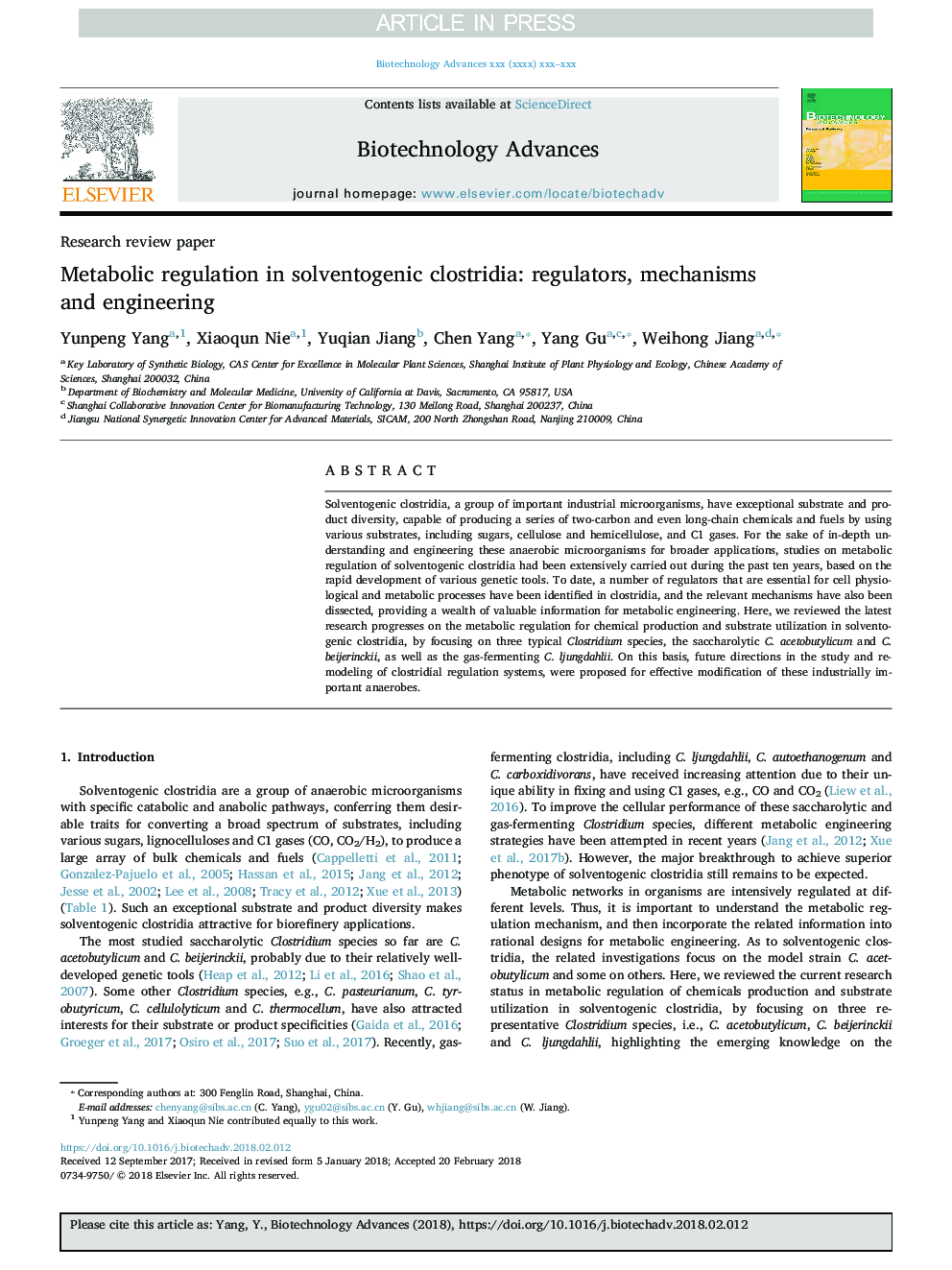| Article ID | Journal | Published Year | Pages | File Type |
|---|---|---|---|---|
| 6486568 | Biotechnology Advances | 2018 | 10 Pages |
Abstract
Solventogenic clostridia, a group of important industrial microorganisms, have exceptional substrate and product diversity, capable of producing a series of two-carbon and even long-chain chemicals and fuels by using various substrates, including sugars, cellulose and hemicellulose, and C1 gases. For the sake of in-depth understanding and engineering these anaerobic microorganisms for broader applications, studies on metabolic regulation of solventogenic clostridia had been extensively carried out during the past ten years, based on the rapid development of various genetic tools. To date, a number of regulators that are essential for cell physiological and metabolic processes have been identified in clostridia, and the relevant mechanisms have also been dissected, providing a wealth of valuable information for metabolic engineering. Here, we reviewed the latest research progresses on the metabolic regulation for chemical production and substrate utilization in solventogenic clostridia, by focusing on three typical Clostridium species, the saccharolytic C. acetobutylicum and C. beijerinckii, as well as the gas-fermenting C. ljungdahlii. On this basis, future directions in the study and remodeling of clostridial regulation systems, were proposed for effective modification of these industrially important anaerobes.
Related Topics
Physical Sciences and Engineering
Chemical Engineering
Bioengineering
Authors
Yunpeng Yang, Xiaoqun Nie, Yuqian Jiang, Chen Yang, Yang Gu, Weihong Jiang,
